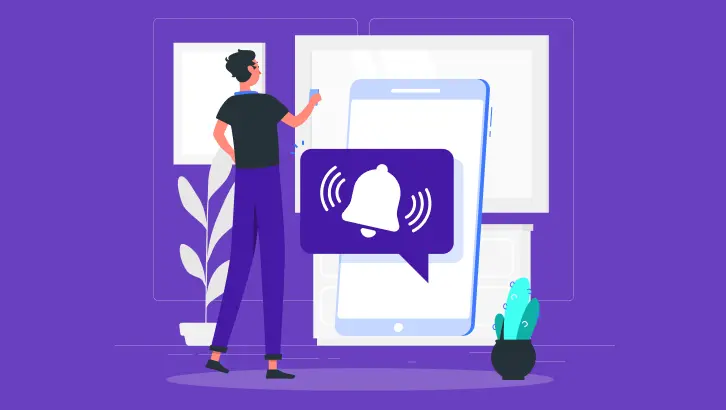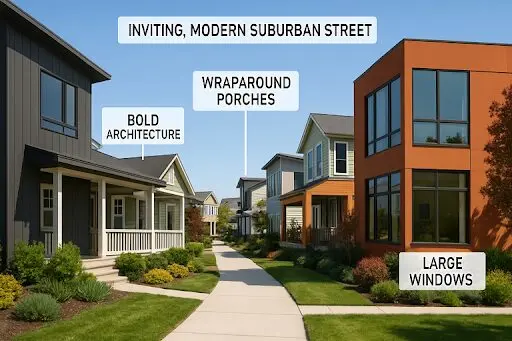The Instant Connection: How Push Ads Reach People When They’re Most Engaged
Most advertising waits. It sits on a webpage hoping someone scrolls past. It lurks in a sidebar wondering if anyone will glance over. Push ads don’t wait for anything. They show up exactly when they want to, right on someone’s device, whether that person is browsing the web or not. That’s the fundamental difference, and it’s why this format keeps gaining ground even as other ad types struggle with visibility.
The thing about push notifications is they operate in a completely different space than traditional display advertising. They’re not competing for attention on a crowded webpage. They’re not fighting banner blindness or getting blocked by browser extensions. They arrive as system-level notifications, the same way a text message or app alert would. That puts them in a privileged position most advertisers can only dream about.
Why Timing Changes Everything
Here’s what makes push ads particularly effective: they catch people during transition moments. Someone just picked up their phone. They’re between tasks. They’re checking the time or reading a quick message. These micro-moments create natural breaks in attention where people are actually more receptive to new information. A push notification landing during one of these windows has a completely different reception than an ad that interrupts focused browsing.
Traditional display ads appear when someone is already doing something else—reading an article, watching a video, shopping for products. The ad is inherently an interruption to their current task. Push notifications arrive during the gaps between activities. That subtle difference in timing means they’re less likely to feel intrusive, even though they’re technically more direct.
The engagement patterns back this up. Click-through rates on push ads consistently outperform standard banner advertising, sometimes by significant margins. Part of that comes down to the delivery mechanism itself. When something pops up on your lock screen or in your notification tray, there’s an almost automatic impulse to check what it is. That split-second curiosity creates opportunity.
The Permission Factor That Actually Matters
What separates push advertising from spam is permission. Users have to opt in to receive these notifications, which means every person in a push campaign has already raised their hand. They’ve indicated some level of interest in hearing from brands or publishers in that category. That pre-qualification changes the entire dynamic.
Think about what that opt-in represents. Someone visited a site, liked what they saw enough to stick around for a bit, and then consciously chose to allow notifications. That’s a warmer audience than someone who just happened to land on a page through a search result. For businesses looking to connect with engaged users rather than just chasing traffic volume, push notification ads provide access to audiences that have already demonstrated interest.
This permission-based model also creates natural quality filters. People who habitually ignore notifications or find them annoying simply don’t opt in. The audience that does opt in tends to be more responsive to direct marketing messages. They’re comfortable with this style of communication and understand what they signed up for. That self-selection process means advertisers aren’t burning budget on hostile or indifferent audiences.
The Technical Advantage Nobody Talks About
Push notifications bypass most of the technical barriers that plague other ad formats. Ad blockers? They don’t touch push notifications because these aren’t served through traditional ad networks or embedded in page content. Banner blindness? Can’t develop blindness to something that appears in your system notifications alongside texts and app alerts. Browser compatibility issues? Push notifications work through standardized protocols that function across devices and platforms.
There’s also the persistence factor. A display ad exists only as long as someone stays on that particular page. Close the tab and it’s gone. A push notification sits in the notification center until the user dismisses it (or acts on it). That extended shelf life means the message gets multiple opportunities to catch attention, not just a single fleeting chance as someone scrolls past.
The mobile advantage amplifies all of this. People check their phones dozens of times per day, and each check involves scanning notifications. A push ad doesn’t need perfect timing to be seen—it just needs to be sitting there when someone does their next phone check. Given how frequently that happens, visibility rates are naturally higher than ads that require active browsing on specific websites.
When Push Works Better Than Everything Else
Certain campaign types practically demand push notification delivery. Flash sales with tight time windows need immediate reach. You can’t wait for people to visit your site and see a banner—you need to tell them right now. Product restocks for high-demand items? Push notifications alert interested buyers the moment inventory becomes available, before organic traffic even knows to check.
Event reminders and time-sensitive content thrive in push format. A webinar starting in 30 minutes, a limited-time discount expiring tonight, breaking news that matters to a specific audience—these all benefit from instant delivery to opted-in users. The immediacy matches the message urgency in a way that passive display advertising simply can’t replicate.
Retargeting through push also creates interesting possibilities. Someone abandoned a shopping cart, and three hours later they get a push notification with a gentle reminder or limited-time discount code. That direct follow-up, delivered outside the original browsing session, often catches people at more convenient moments when they’re actually ready to complete the purchase.
The Engagement Reality Check
Not every push notification converts, obviously. Users develop their own filtering mechanisms. Too many notifications from one source and people disable them entirely. Irrelevant messages get ignored. The key is that even ignored push notifications still got seen. That’s more than can be said for the majority of banner ads, which never register in conscious awareness at all.
The metrics tell a clear story. Push ads generate response rates that display advertisers would consider excellent. The cost per click typically comes in lower than comparable formats because the delivery is more efficient. There’s no wasted inventory on ad placements where nobody looks. Every notification has at least a moment of attention, even if that moment doesn’t result in a click.
What This Means for Marketing Strategy
Push notifications aren’t replacing other ad formats—they’re filling a gap those formats can’t reach. The user who isn’t actively browsing but would respond to the right message at the right time. The customer who needs a reminder but won’t return to your site without prompting. The audience that actually wants marketing messages but on their own terms and schedule.
The format works because it respects a simple truth: people are more receptive to messages when they choose to check their device than when those messages interrupt what they’re already doing. That’s the instant connection that makes push advertising effective. Not interruption dressed up as engagement, but genuine access to attention during natural break points throughout the day.
For marketers tired of fighting for scraps of attention on crowded web pages, that direct line to opted-in users changes the game entirely. The ads still need to be relevant and well-timed, but at least they’re getting seen. In an advertising environment where visibility itself has become the primary challenge, that’s not a small advantage. That’s the whole point.






